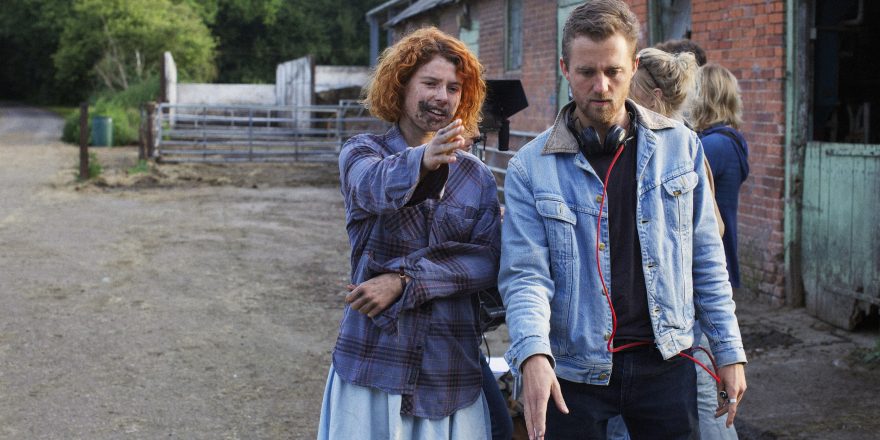To mark the 2022 edition of the Venice Film Festival, which runs this week, Talkhouse is revisiting pieces by contributors who have new work at the festival. Mark Cousins wrote the essay below in 2019 to coincide with the U.S. theatrical release of his documentary The Eyes of Orson Welles and on August 31 debuted his latest film, March on Rome, at the Biennale. – N.D.
In my new documentary, The Eyes of Orson Welles, which is about Welles’ drawings and paintings, I say “the world has become Wellesian.” As I wrote that line, I was thinking of various things. Politicians like Donald Trump, Vladimir Putin, Recep Tayyip Erdoğan in Turkey, Narendra Modi in India and Viktor Orbán in Hungary are larger-than-life tyrants, variations on Charles Foster Kane and Gregory Arkadin in Welles’ Confidential Report.
To say that life has become Wellesian is to imply that the great man of film, theatre and radio was ahead of his time. But how does someone get ahead of their time, or how do we avoid falling behind our time? I thought about this today as I rewatched Preston Sturges’ The Lady Eve on the big screen in Scotland, where I live. The Lady Eve was released 71 years ago, yet it’s fresher than many movies from the early 2000s.
Why? For several reasons. The discrepant Sturges – who’d spent time in France and had a wild mother – was against his time. He was against everything, in a way – the sexual, social and moral values of America in the 1930s, ’40s and ’50s. He took pot shots at most of the things that moved people back then, and wrote the screenplay of The Lady Eve for Stanwyck, giving her a character who was the opposite of Garbo’s soulful quietude, and made heroic Henry Fonda fall on his face five times in the film to pull the carpet from under Tom Joad of The Grapes of Wrath. In other words, Sturges wasn’t tethered to the mid-20th century.
The case of Orson Welles is more complicated. Sturges’ mosaic screenplay for The Power and the Glory (1933) seems to have influenced Citizen Kane, but in other ways Welles was far more romantic than Sturges. The former was obsessed by Shakespeare’s Sir John Falstaff and Cervantes’ Don Quixote, figures not only from the past but a mythical past – hardly the best avatars with which to be ahead of the time. So how do we square Welles’ focus on the past with the fact that today when we watch Citizen Kane, or The Lady From Shanghai, or his essayistic F For Fake, or his charcoal drawing Macbeth (let’s leave aside his TV film The Immortal Story), these films seem so modern?
To answer that question, let’s detour into the Hollywood films which have really dated. It’s hard to watch the old Tarzan movies now, for example. Their sense of what a jungle is, what Africa is and what civilisation is, seems hopelessly wrong since the deforestation of the Amazon, the civil rights movement, Afrofuturism, and the election of an African-American president. And it has to be said that even the free-thinking Sturges stumbles when it comes to the depiction of racial diversity. Dated in a different, more trivial, way are the ’80s films with mobile phones the size of building bricks. It’s easier to watch Myrna Loy use a landline in a 1930s film, than a yuppie think he’s cool with a clunky proto-cell phone.
Less obvious is the reason why the films of Cecil B. De Mille have dated so badly. His Cleopatra (1934) and Samson and Delilah (1950) had big budgets and plenty of allure and sexuality, but they derive from a Victorian, 19th-century, pre-Freudian world view, where pleasure had to be punished, where desire was coded, where gender norms were overly proscribed, where god was a given. Watch them now and you want to shout, “Get on with it. Don’t veil your erotic imagination, don’t wrap it up in bogus historical parables.” De Mille films feel like he went clubbing for a night, then felt dirty afterwards. The same can be said for the otherwise admirable director Lois Weber. An innovator in many ways, and with 140 directing credits to her name between 1911 and 1934, she nonetheless made films like Where Are My Children? (1916), a hand-wringing and clunky adventure into the world of abortion.
Orson Welles was not free of such moralising, and in his newspaper columns and radio shows, he worked up a lather about many of the changes of his times. But several things mark him out. Firstly, he hitched himself to the bucking broncos of sexual and racial freedom, which have if anything gained in energy since the 1940s, when Welles became one of the most famous men in America. Secondly, he believed in contradiction, or at least embraced it – what the poet John Keats called “negative capability.” Welles was a romantic and a modernist, he was passionate about the Merrie England of Shakespeare and the Einsteinian time-space properties of film. This probably came from the fact that his imagination was formed in the 1920s and ’30s. He hated the tyrants of those years – Hitler, Mussolini, Hirohito, etc. – but was fascinated by tyranny, as his films show. His work still rings true now, not only because Trump and Modi seem like a new spin of that wheel, but because the digital era amplifies contradiction. Social media spotlights dispute and social fissures. Some would argue that it forces people apart, in the way that ice increases the crevice in a rock.
Welles, the political activist, admirably campaigned for social change (and wrote speeches for Eleanor Roosevelt, for example). But Welles, the artist, scorned the optimism of Welles, the citizen. He honed in on doubt. Like Preston Sturges, he was a satirist. In his work, he didn’t try to contain life, he increased its amplitude. He rocked the boat.
The boat is rocking again. Perhaps it always will. Are we always in the storm? When we are, there is someone from the 20th century who will help us through it, or help us not underestimate it.
His name is Orson Welles.
Images: Janus Films and YouTube (link).







